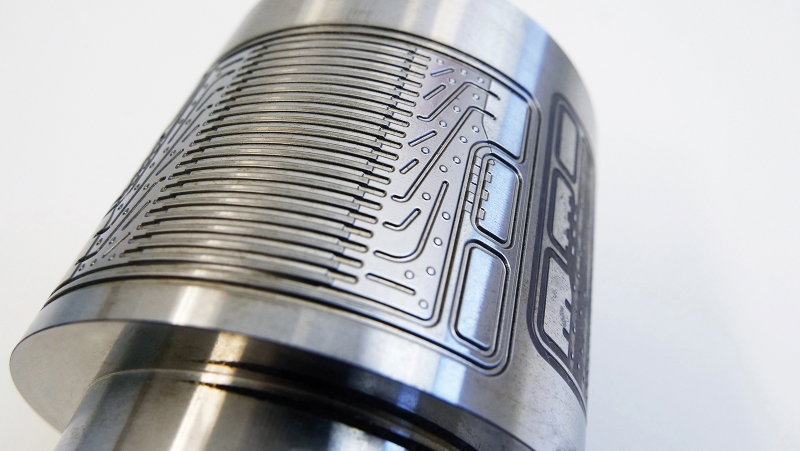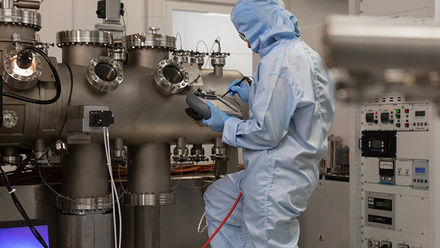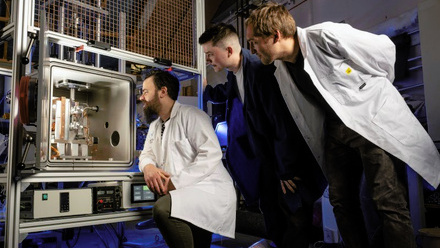Roll embossing lowers costs of bipolar plates
A hollow embossing rolling system has been developed for a potentially more cost effective, continuous and quicker process for manufacturing bipolar plates for hydrogen-powered fuel cells.

It is the brainchild of researchers at The Fraunhofer Institute for Machine Tools and Forming Technology IWU, Germany, and Profiroll Technologies GmbH.
Hydrogen fuel cells are dependent on bipolar plates and the two conversion components contained within them – the membrane electrode assembly and the catalyst-coated membrane in the electrolyser. However, metallic bipolar plates are expensive to manufacture. One reason for this is that currently they are not produced continuously.
Stefan Polster, Head of the Sheet Metal Processing and Tool Design group at Fraunhofer IWU, explains, 'Each bipolar plate consists of two stainless steel halves. Structures for the gas flow and heat dissipation are embossed onto the halves in a discontinuous forming process, and then they are joined together.'
This is where the new BPPflexRoll system comes in. Covering an installation footprint of 450 x 330cm, the prototype operating on Fraunhofer IWU’s production line comprises three pairs of roller stands for feeding, forming and handling.
A stainless steel or titanium foil sheet measuring 50-100µm is then guided between each pair of rollers. These emboss the bipolar plate’s structure onto the sheet as it passes through the forming stage, with one roller acting as a punch and the other as a die.
'When the corresponding structured areas meet, the film is moulded between the rollers,' explains Polster.
'The rotation of the rollers results in a translational or transport effect on the material to be formed. A feed and removal unit adapted to the rotation of the hollow embossing rollers is used to produce the coil and to realise a defined pre-tensioning on the foil.'
Since the rollers used to form the flow channels have only one-line contact with the workpiece, step-by-step forming in a continuous stream reduces the process forces by a factor of 10 on average, compared to conventional embossing. The number of roller sets required can also be adjusted individually, depending on the plates’ geometries.
The team suggests it is possible to produce as many as 120 bipolar half plates every minute using hollow embossing rolling. By doubling the output quantity compared to the established processes, they expect a significant reduction in manufacturing costs.
The first bipolar plates produced at the facility have been tested in fuel cells. According to Polster, the test cell’s performance corresponds to that of the Baltic High Amp test cell with graphitic flow fields.
'At cell potentials below 0.5V, we experience stronger diffusion losses due to slight flooding of the not-yet-optimised flow fields during hollow embossing rolling,' Polster explains. 'However, in the relevant nominal operating range above 0.5V, we are at the least equally competitive.'
He says the combination of in situ test cells and ex situ ageing cells manufactured using hollow embossing rolling provides an opportunity to accelerate the ageing of metallic flow field materials ex situ. This can be followed by an evaluation of the same substrates electrochemically in situ.
The team point out that more work is needed to determine the system’s achievable geometry quality, production rate and robustness, with potential for use for heat exchange plates, plates for electrolysis and drums for washing machines.







